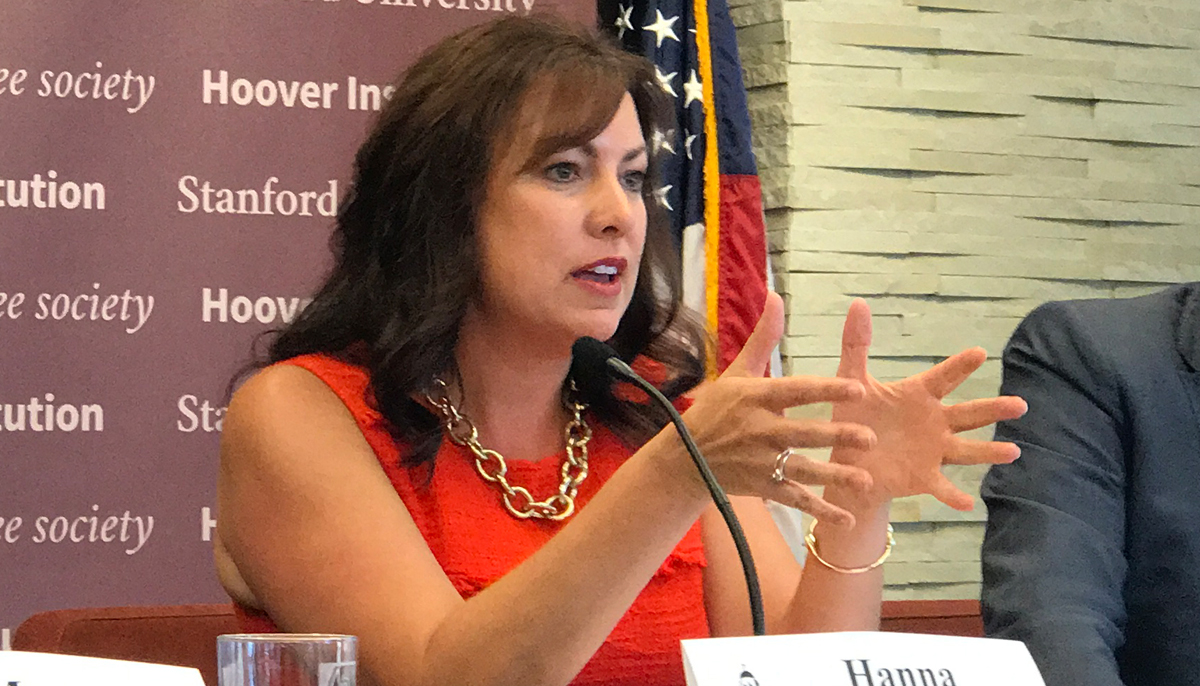
Education Next showcased the results of its 2017 opinion survey at a September event at the Hoover Institution in Washington, D.C. Hanna Skandera, who led the transformation of New Mexico’s schools as state secretary of education, participated in a panel discussion on the poll. Serving as moderator was Alyson Klein, federal education policy reporter for Education Week. The following excerpt is edited for clarity and brevity.
Klein: The 2017 EdNext poll found significant erosion in support for charters among the public. How does that finding track with your experience on the ground?
Skandera: It is quite the opposite in New Mexico. The reality—which I don’t see changing anytime soon—is that parents are demanding great schools for their kids. They often don’t distinguish between charter and non-charter. They ask: “Is this a great school?” and “Will it serve my child?” To give you one example: my little sister in the Big Brothers Big Sisters program was on a waitlist of 1,200 kids at a school with 400 students. In New Mexico, parents and families are committed to getting the best education for their kids.
Klein: We’ve seen a decline in support for merit pay for teachers, although a plurality of the public still supports it. . . . I’m wondering, is that a blip? Or is it the tip of the iceberg? And is there anything out there that you can attribute those changes to?
Skandera: It’s important to understand where our teachers land in their performance measures. After all, that performance has everything to do with how our children will succeed. When I first arrived in New Mexico, there was no clear picture on how to differentiate our teachers. When we asked principals to evaluate their educators and to include student achievement in those evaluations, 99.8 percent of our teachers received the same rating. We knew, as tough as it might be, we owed it to our children to close the honesty gap and work on where we needed improvement. Closing that gap took a lot of time and energy, and I think we got stuck on the measurement piece—but it’s what we do with that information that’s far more important. We can’t just “measure and walk.” We need to get to the right conversation to figure out how to improve teacher performance and ultimately provide our students with the best education possible.
However, as we move forward, it’s also important to avoid another pendulum swing, which is typical of policy at the federal and state level. Often we see a reactionary response. We should use the nuggets of why we started measuring in the first place to inform where we want to go next.
Klein: Thanks in part to the Every Student Succeeds Act of 2015 (ESSA), states are going to have a bigger role than ever in shaping K–12 policy. But when we look at the polling data, it seems that the public’s perception is shaped quite a bit by national debates, some of which may have only a tangential connection to education. How can state leaders help parents and communities see the local impact and rationale for a particular policy?
Skandera: It takes a lot of work—but connecting directly with parents, families, teachers, and community leaders is essential. I had the privilege of serving for nearly seven years in New Mexico, and it took me way too long to realize that if I tried to communicate through the traditional chain of command—state chief, superintendents, principals, teachers, and parents—I would utterly fail to reach families and communities. It was the worst game of telephone; we were lucky if we were still on the same topic by the time word got to the parents.
We need to think about how we can reach our communities in meaningful ways. We conducted focus groups throughout the state, and when we spoke to parents in the ways that they think about education issues, we saw that they wanted many of the same things we were trying to get accomplished. Parents fundamentally support knowing how their kids are doing, having choices, and measurement.
It would be foolish to do community focus groups using the term “ESSA.” Parents and families don’t know what that is. In fact, as soon as you utter an acronym at a community forum, people say, “Great, I thought this was going to be about my child.” The language we use, the topics we choose, and how we talk about them are critical. For far too long in education, the conversation has been centered on our own selves and our own systems. It’s time to start listening to our parents and teachers and finding ways to respond directly to their needs.
This article appeared in the Winter 2018 issue of Education Next. Suggested citation format:
Education Next. (2018). Q&A: Hanna Skandera – New Mexico’s former state chief talks ed reform. Education Next, 18(1), 88.


